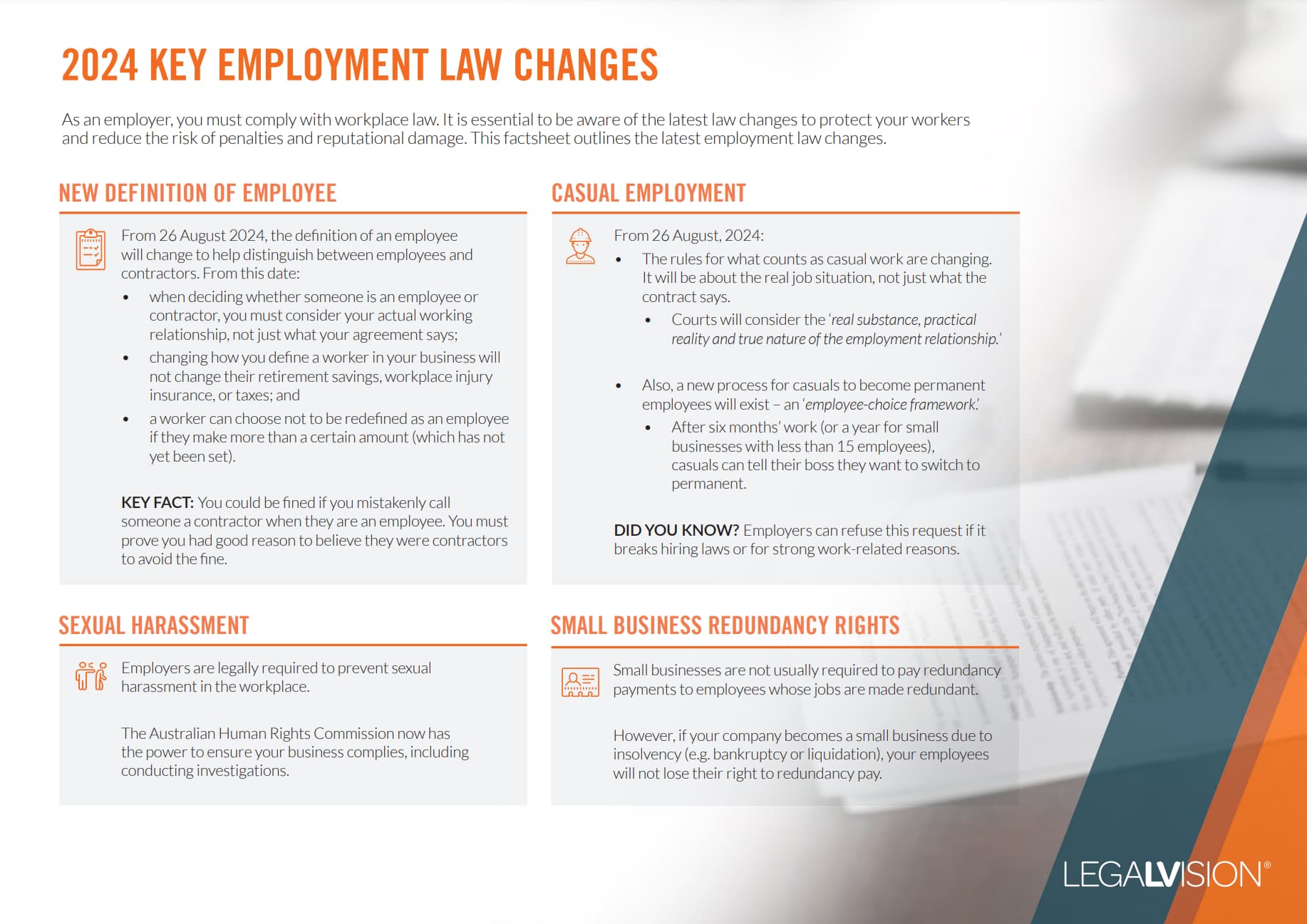As an employer, you must ensure you create an inclusive and accessible workplace. Not only do you have obligations under federal and state or territory laws to ensure equal employment opportunities, but doing so will attract more diverse workers and likely result in a healthier and happier work environment. Collecting equal opportunity data will enable you to understand your strengths and shortcomings in offering equal employment opportunity, highlight areas for improvement and limit the risk of a workplace discrimination claim being brought against you. This article will outline your obligations regarding equal employment opportunity and explain how collecting equal opportunity data can both benefit your business and mitigate risk.
What is Equal Employment Opportunity?
As an employer, you are likely to have heard of workplace discrimination. You may have implemented a discrimination policy or offered training to new employees on this issue. While these are great steps in ensuring your business meets its obligations, you must understand and take active steps to ensure the important yet often overlooked element of equal employment opportunity.
To illustrate, a business that actively promotes equal employment opportunity may take steps to facilitate the employment of a person with limited mobility, including by:
- making adjustments to the physical interview space during recruitment;
- installing a ramp or handrail in the office; and
- ensuring that the employee does not encounter any discrimination or harassment from other workers.
The primary source of your obligations regarding equal employment opportunity is federal and state anti-discrimination laws. These laws prohibit you from taking discriminatory action in hiring or managing employees based on particular attributes, including:
- race;
- ethnicity;
- colour;
- sex;
- sexual orientation;
- gender identity;
- relationship status;
- family or carer responsibilities;
- pregnancy;
- mental or physical disability;
- religion;
- political opinion; or
- age.

As an employer, it is essential to understand what employment laws have changed and their implications for your business — particularly the changes to the Fair Work Act 2009 through the new Closing the Loopholes legislation.
What is Equal Opportunity Data?
During your recruitment and onboarding process, it is likely that you will have received some information about your new employee. Most often, this relates to their age, gender identity and any disabilities. Additionally, throughout the course of employment, your employees may disclose particular information to you regarding more personal matters, like their religion, either verbally or via other data-gathering processes, such as a diversity survey. This information makes up equal opportunity data.
Equal opportunity data is also used by government agencies to assess Australia’s success in encouraging equal access and achieving workplace equality. As an employer, if you employ 100 or more employees, you have a legal obligation to report gender equality data to the Australian government’s Workplace Gender Equality Agency. If you fail to do so, you may encounter consequences including:
- breaching the law;
- reputational damage; and
- being placed on a non-compliance list.
Understanding what data is appropriate and lawful to gather is not always a simple task. Additionally, you will need to decide what data will be useful to your business’ growth and improvement and where it is lawful for you to make employment decisions based on the data. An employment lawyer can help you understand your obligations and the best practices regarding managing this data and fostering an inclusive workplace.
Continue reading this article below the formHow Equal Opportunity Data Can Help Your Business
This data, when assessed alongside hiring outcomes, retention and internal advancement data, will provide you with valuable insights regarding your business’ approach to equal opportunity. Further, you can review this data alongside any internal anti-discrimination policies to assess your business’ success in meeting its obligations to employees and candidates.
Overall, it is integral that you take measures to ensure that you are meeting your legal obligations. Equal opportunity data can help you ensure that your business is not inadvertently engaging in discriminatory hiring practices.
Key Takeaways
Equal opportunity data refers to the data you may collect about employees regarding their personal characteristics and attributes when you hire them. Your employees may also give you additional data during their employment. This data helps you ensure that you are meeting your anti-discrimination and equal opportunity obligations at law. Overall, it is integral that you lawfully collect this data and store it to reflect on your workplace policies and hiring culture.
If you need assistance with understanding your obligations as an employer regarding equal employment opportunity, or how maintaining data can assist your business, our experienced employment lawyers can assist as part of our LegalVision membership. For a low monthly fee, you will have unlimited access to lawyers to answer your questions and draft and review your documents. Call us today on 1800 534 315 or visit our membership page.
We appreciate your feedback – your submission has been successfully received.











